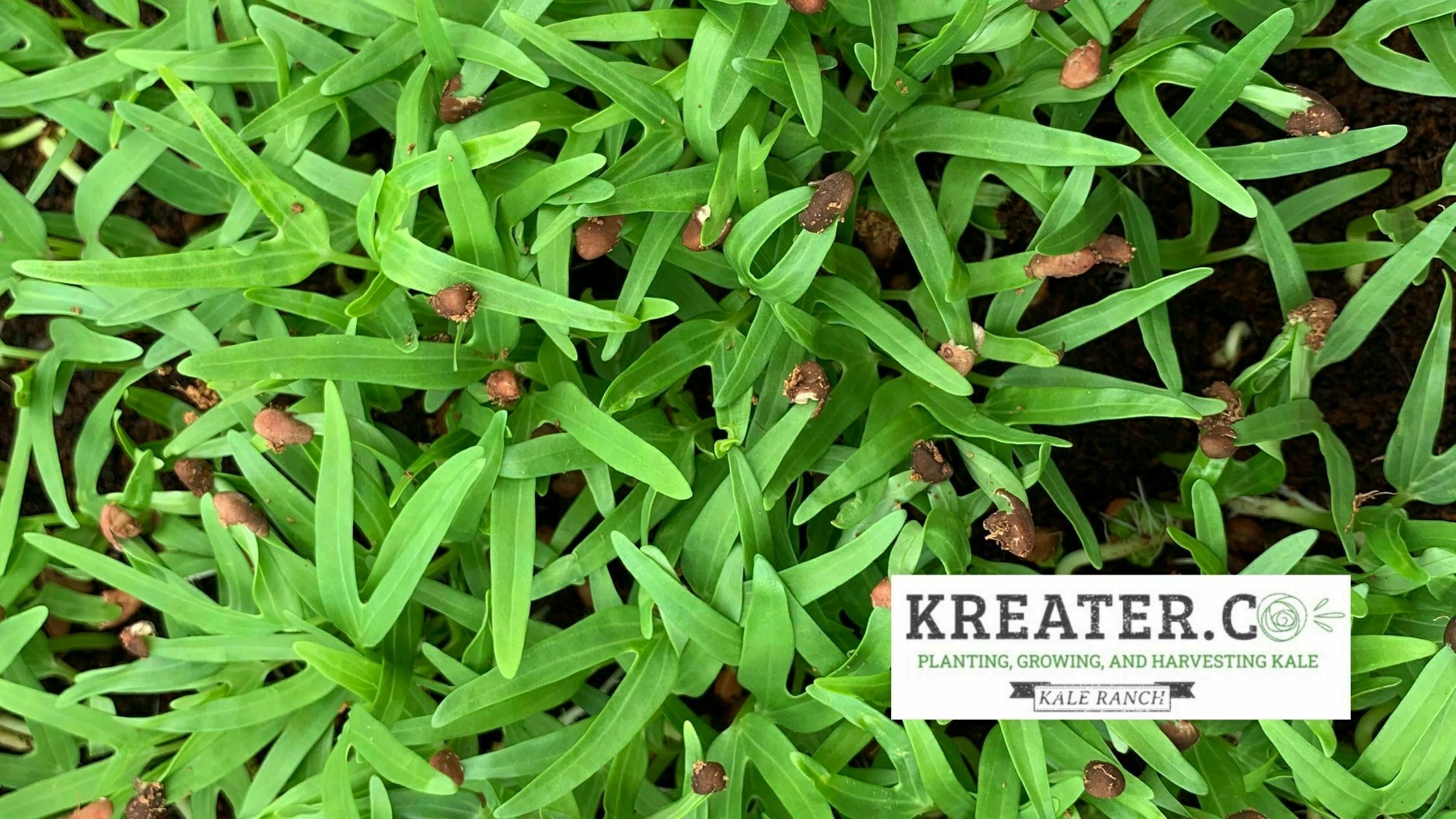Kale is widely regarded as a superfood since it offers tons and tons of health benefits, and since it is so good for our bodies, more and more people are looking to grow their own kale. To do that, you should know a few things, including that there are different types of kale seeds, which we’ll be covering in this article.
Kale has been consumed for ages and has become a tradition in some parts of the world. Did you know that this leafy veggie is so popular in Scotland that kitchen gardens are called “kale yards” and a general dinner meal is called “kail”? Well, now you do. Kale is a descendant of wild cabbage, and most kale varieties are native to Europe and parts of Asia. Kale has been used to feed both humans and livestock.
Varieties of Kale Seeds
There are many kale varieties that you can try. The curly-leaf types tend to hang on longer in cold weather. But the flat-leaf types generally become established faster. Check out different types of kale seeds for your consideration.
Hanover Salad

Considered a fast grower and an early producer. It has a pleasant taste for eating raw in salads. Enjoy this leafy green in salad, wraps, or soups. It can be steamed or fried as well.
When eaten fresh in salads, the leaves have a strong but good flavor and a mild flavor when steamed, boiled, or stir-fried.
Lacinato

It is a puckered heirloom kale from Tuscany, which is also known as Tuscan kale. Its thick leaves are hardy enough to be harvested even after a snowfall.
The texture of the leaves is bumpy, which is also why some other people refer to it as dinosaur kale.
It has tall, slender bluish dark green leaves, and grows upright, often reaching several feet tall. Lacinato kale is great for eating raw because it has a more mild, nutty flavor.
Redbor

Redbor kale is a hybrid that can grow up to 5 feet tall. This kale seed type is pretty to look as it presents magenta leaves with curly edges.
It may start as a more flat leaf, but the color, flavor, and curling of leaves are increased by cold weather.
It features a mild, crisp flavor and texture and is great to use in green salads for a pop of color.
Red Russian

In Red Russian kale, you’ll find smooth, tender leaves with purple veins and edges, hence the name. It also has reddish stems as they grow larger, growing up to 2 to 3 feet tall.
Praised for its sweetness, many heirloom kale varieties of red kale, such as Red Ursa and Winter Red.
Their sweet and slightly peppery taste makes a great addition to salads or even for snacking.
Vates kale

This is a dwarf, curly, bluish-green kale that is both heat- and cold-tolerant. It is derived from ‘Dwarf Blue Curled Scotch’ kale.
It tends to be a shorter variety that grows less than 2 feet tall. It produces early but is biennial and can survive for two growing seasons.
Scotch kale works well in salads or stir-frys. It has a pleasantly sweet and nutty flavor and also makes great chips.
Best time to Plant Kale
Kale seeds can be started indoors or sown directly in the garden.
If you want an early summer harvest, direct seeds outdoors as soon as the soil is workable in the spring.
In early spring, young kale plants can be set out in the garden 3 to 5 weeks before the last spring frost date. If temperatures are likely to dip well below freezing, you want to cover young plants at night.
For a fall or winter harvest, direct seeds about three months before your first fall frost date. Young kale plants can be set out 6 to 8 weeks before the first fall frost. In zones 8, 9, and 10, kale can be planted later in the fall and even into winter.
How to Plant Kale
Kale is easy to grow from seeds either directly planted in the garden soil or started indoors and then transplanted. It is also commonly planted from nursery starts.
Kale grows equally well in raised garden beds and containers if you’re short on garden space. Another cool thing about kale is that you can harvest what you need while the plant continues to grow.
How to grow Kale from Seed
Choose and prep a planting site. Kale does best in full sun but does tolerate partial shade.
The soil pH should ideally be 6.5 to 6.8 to discourage disease, but kale is tolerant of more alkaline soils up to a pH of 7.5.
Soil needs to drain well and also be enriched for tender leaves. When planting, add fertilizer.
Kale can be direct seeded in the garden or started indoors and transplanted into the garden. You can direct seed in cold climates as soon as the soil temperature is at least 45 degrees Fahrenheit. If you want your kale to grow faster, then leave it indoors under lights.
Kale seeds germinate quickly in warm soil and should sprout up within five to eight days. Cover the seeds with about 1/2 inch of soil and do not allow the seeds to dry out before germinating.
Transplant your seedlings after the threat of frost has passed. You also want to leave approximately 16 inches of spacing between the plants. This is important so they can spread and also allow air circulation.
In warm climates, kale can be directly seeded in the late summer or early fall and spring. A winter crop of kale in warm climates is often much sweeter than a summer crop. Have you heard about Kale powder?
Kale Seeds Care
Consider the following elements when caring for your kale seeds.
- Light. Because kale is grown for its leaves and not its flowers, it can handle full sun to part shade.
- Soil. Kale plants like to grow in rich soil high in organic matter with a slightly acidic soil PH.
- Water. Shower your kale plants regularly, so the soil stays evenly moist. Along with cool temperatures, moist soil helps to keep the kale leaves sweet and crisp because who wants tough and bitter leaves.
- Temperature and Humidity. The optimal soil temperature for planting kale is 60 to 65 degrees Fahrenheit. All varieties prefer cool temperatures and will be sweetened by a touch of frost. Hot weather turns kale bitter.
- Fertilizer. When planting, mix fertilizer into the top 3 to 4 inches of soil. Then, feed your kale throughout the growing season. Follow the directions and use compost or a high-nitrogen vegetable fertilizer.
- Keep them pests free, reading about all the Types of Kale Pests and How to Control Them



